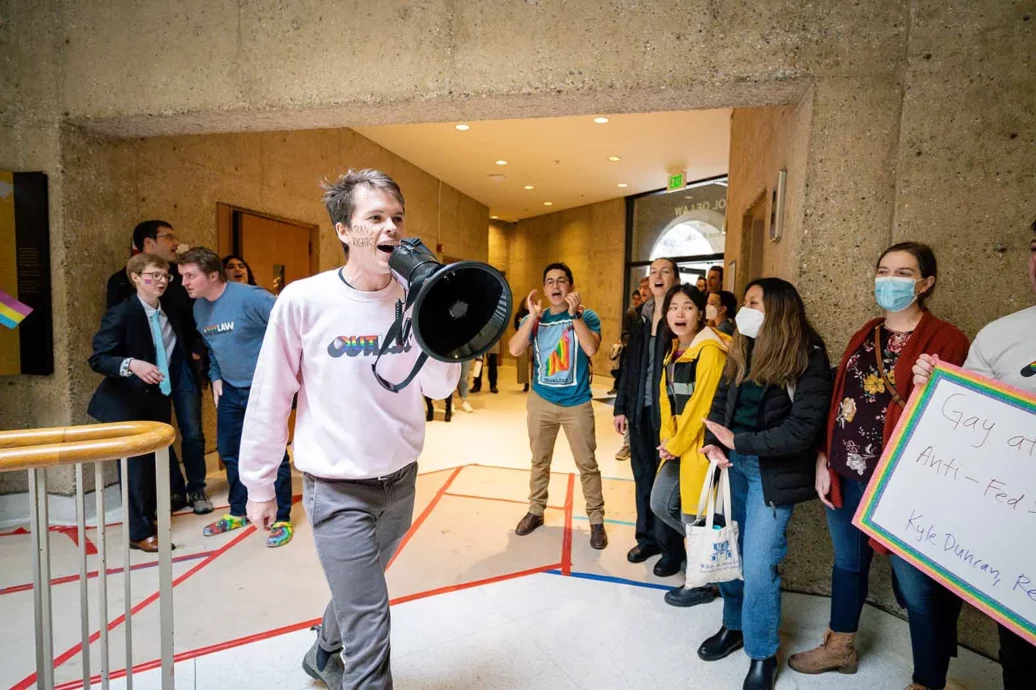A student is not an empty vessel. To find wisdom, or perhaps to be found by wisdom, it is necessary to be actively engaged in its pursuit.
Schools Can Be Diverse and Competent
Two decades ago, I taught in an American international boarding school in Switzerland with some 300 students from over 40 countries. Despite the mixing of cultures, it was fascinating to watch how, in the dining hall, one table would inevitably fill up with Russian speakers, while others became the tables for Arabic, Japanese, Chinese, Italian, Turkish, German, Spanish, French, and Portuguese. Living away from home and surrounded by diversity in classrooms and dorms, many students were drawn magnetically to a table where they could speak in their native tongue. This provided a counterbalance to speaking English in school all day, keeping students connected and comfortable. And observing these students interact according to their cultural norms and styles was a study in diversity.
The same was true of activities like international night, where students proudly and loudly displayed music, dancing, arts, sports, and food from their cultures, including some dancing on the tables. To be sure, the student body was not very economically diverse, as most came from wealthy families, except for a few local kids and some whose tuition was paid by corporations or governments. But partly by accident and partly by design, the school hit a nice balance between a melting pot and a plural society, so that the diversity of the whole student body shined through.
There was no DEI office or diversity czar at this boarding school. Yet it functioned well as a “container for diversity,” to borrow Notre Dame political philosopher Patrick Deneen’s phrase. This container was built on common agreement on 1) English as the main language and 2) the value of tolerance and open-mindedness toward other cultures. The school attracted students who shared these values. Those who did not share them did not thrive there, and a few managed to get themselves expelled. This made it clear that an appreciation for other cultures and beliefs can be encouraged, but it cannot be forced.
It also became obvious that the success of a diverse student body depends on each unique student figuring out for themselves what they share in common with others around them. Maybe two students both like rap music, or baking, or they both used to live in Dubai. No DEI policy or training can dictate the special commonalities that provide catalysts for bonds between students from different backgrounds.
So how can schools encourage, but not force, an appreciation for diversity? One answer is simple: Let diverse students work together to accomplish difficult things. Set big common goals—in this school, one was to earn the International Baccalaureate (IB) diploma—then continuously refocus students’ collective energies on achieving them: study for the test, win the game, enliven the discussion, create harmony in the dorms, travel and see the world. In the process, the students will have to negotiate their differences and find common ground to reach their goals.
In his book American Awakening: Identity Politics and Other Afflictions of Our Time, Georgetown University political theorist Joshua Mitchell says schools are among the indispensable mediating institutions which provide the training grounds for developing competency in citizenship, including the art of being a citizen in a diverse society. These institutions also include family, churches, and local civic associations. In and through institutions, says Mitchell, we learn to lead and follow, trust, and establish who we are—our identity. And we establish this identity not by declaring it, but by discovering it through constant face-to-face associations, whose importance Tocqueville emphasized in Democracy in America: “Sentiments and ideas renew themselves, the heart is enlarged, and the human mind is developed only by the reciprocal action of men upon one another.” As Mitchell puts it, institutions mediate between the state and the many, and they draw citizens out of themselves to participate in society. This function is especially crucial in democracies, said Tocqueville, because they lack hereditary social structures to act as mediators to bind society together. A downside of the freedom valued by democracies is that it permits citizens to self-isolate and disconnect from society. But only when citizens are drawn out of themselves and connect can society accomplish great things.
The boarding school in Switzerland exemplified the sort of mediating institution that Mitchell and Tocqueville describe. I can think of a few situations that draw people out of themselves and connect them more than studying, playing, eating, and socializing together 24/7 on a relatively small campus in the Alps. Students—and faculty—learned how to lead and follow, how to trust, and how to establish their identity within all sorts of formal and informal associations large and small: a dorm room with three other people, a 7-hour team van ride to a tournament, a new club negotiating how to get off the ground, an advisee group dinner talking out thorny issues. These are part of a continuous stream of face-to-face associations that never seems to cease in boarding school life. To be sure, there were innumerable messy conflicts along the way. This is exactly the nature of mediating institutions, through which citizens figure out how to rule themselves, rather than relying on the dictates of aristocrats. Through the process, “the heart is enlarged, and the human mind is developed.” Should this not be the goal of any educational effort aimed at diversity?
Today’s DEI movement has gone terribly wrong by alienating rather than mediating. Rather than focusing students on big common goals and helping them recognize their commonalities, it tears them apart by focusing their attention on contending even the smallest divisive issues, as indicated by the DEI jargon term “microaggressions.” DEI-gone-wrong is built on what Mitchell calls “the politics of innocence”: dividing society into guilty transgressor identities (ex. “the patriarchy”) and innocent victim identities, based on past suffering, wherein transgressors owe victims a “spiritual debt.” To pay off this debt, the transgressors are silenced and purged, while the victims dictate the rules. Two wrongs make a right, says DEI-gone-wrong. This actively destroys the middle ground. The politics of innocence thus shuts down the formation of Tocquevillian associations before it can start, leaving society with no way out of isolation, fragmentation, and conflict.
The dysfunction of the politics of innocence was on display recently in the Stanford Law School incident in which Tirien Steinbach, the associate dean for DEI, orchestrated a premeditated heckling and shout-down of conservative judge Stuart Kyle Duncan, who had been invited to speak by students in the campus Federalist Society. Before the event, Steinbach sent emails encouraging students who opposed the speaker to attend. As the students shouted down the judge, Steinbach stepped in and hijacked the event with her own prepared speech, claiming to support free speech while simultaneously imploring the judge not to speak, saying his words would “hurt” students, who were adults in their 20s. She then looked on with tacit approval as students hurled profanity and vulgar insults, also written on obscene placards they held up. They were engaging in what Mitchell calls “innocence-signaling,” while signaling the guilt of the speaker, whom they sought to purge.
With no majority nationality or ethnicity at the boarding school, most people on campus recognized the need to be open and make each other feel welcome in order to, as Joshua Mitchell puts it, “build a world together and have a tomorrow.”
The Stanford incident provides an instructive example of the incompetent use of a mediating institution. Steinbach showed no aspiration to mediation. There was no attempt to draw the attendees out of themselves, focus them on big common goals, or connect them to each other through discussion. Instead, she spoke on behalf of only one viewpoint and shamed the judge for his—before he had spoken—then allowed the students she invited to destroy the forum for mediation itself. Despite being unable to produce a coherent counterargument to the judge’s remarks, the DEI mob eventually walked out in self-congratulation. Steinbach had modeled to them that what really mattered was not developing competence in contributing to a discussion of diverse opinions on the law, but basking in innocence, ensuring that their ideological safe space was intact. Their incompetence in the art of engaging in discussion fits the description Nietzsche made in Thus Spoke Zarathustra: “The time is coming when man will no longer shoot the arrow of his longing beyond man, and his bowstring will have unlearned to vibrate.”
By contrast, what made the boarding school a successful mediating institution is what Mitchell calls the “politics of competence,” not the politics of innocence. By providing big common goals, the forums and facilitators necessary to achieve them, and a diverse student body, the school helped students develop competence in living in a diverse society. Life on campus was far from perfect. Were there occasional intolerant attitudes, fights, insults, insensitive jokes, and slurs? Of course. But these were the exception, not the rule, and they were handled by faculty and administration, and often by the students themselves. The idea that anyone would—or would be allowed to—shout down an invited speaker would have been laughable, because students were so habituated to working together with others with different viewpoints.
None of this was achieved by grandiose DEI policies and abstract buzzwords, but through competence in creating real-world experiences in which students had to do difficult things together. Some of these experiences were created by members of the faculty and administration, and others by the students themselves. In the dorms, the prefect system developed students’ competence in leading and following and resolving disputes among each other. One administrator was a retired doctor, and he used his competence in medicine to arrange for many seniors to work in an orphanage in Romania with kids who had contracted AIDS through blood transfusions, as part of Creativity, Action, and Service (CAS), one of the IB Diploma Program’s core requirements. The IB Environmental Systems and Societies teacher arranged an overnight trip to a sustainable agricultural cooperative and taught students how to work together to collect fieldwork data there.
Travel was instrumental in developing competence. One of the traits listed in the IB Learner Profile is “open-minded,” and as Mark Twain said, “Travel is fatal to prejudice, bigotry, and narrow-mindedness.” Besides several required week-long school trips each year, students could invent their own clubs and trips, as long as faculty members agreed to lead them. It was the success of this sort of ground-up process of association aimed at a goal that amazed Tocqueville about America: “I often admired the infinite art with which the inhabitants of the United States managed to fix a common goal to the efforts of many men and to get them to advance to it freely.” The school was founded as a platform for students to see Europe and “stretch their minds,” as the late founder liked to say, and this is precisely why many students chose to go there.
By contrast, it seems unlikely that Steinbach and the student DEI mob came to Stanford to stretch their minds and develop competence in understanding other cultures. In fact, their presence on campus is more likely the result of years spent honing the craft of innocence-signaling. It is hard to imagine a student who spent significant time looking after dorm mates or working with kids at an orphanage yelling “We hope your daughters get raped!” as the Stanford DEI mob did, or a student who spent years adapting to new cultures and foreign environments—and writing IB essays, which require a “clear awareness and evaluation of different points of view”—yelling at a federal judge “You’re not welcome here, we hate you!” “Leave and never come back!” “We hate FedSoc [Federal Society] students, f–k them, they don’t belong here either!”
On the contrary, with no majority nationality or ethnicity at the boarding school, most people on campus recognized the need to be open and make each other feel welcome in order to, as Mitchell puts it, “build a world together and have a tomorrow.” This is the politics of competence at work. Students developed competence in transforming a diverse group of people into a community, one trip, one project, one friendship at a time.
In return for the pursuit of innocence-signaling, the Stanford Law School DEI mob will likely graduate with little more competence in the art of citizenship in a diverse society than they came in with. By contrast, students and faculty at the boarding school often say that the cultural competence and appreciation for diversity they developed in their years living on a hill in the Alps have lasted a lifetime.



